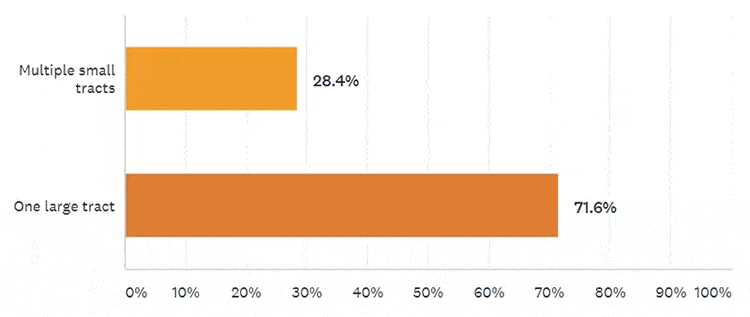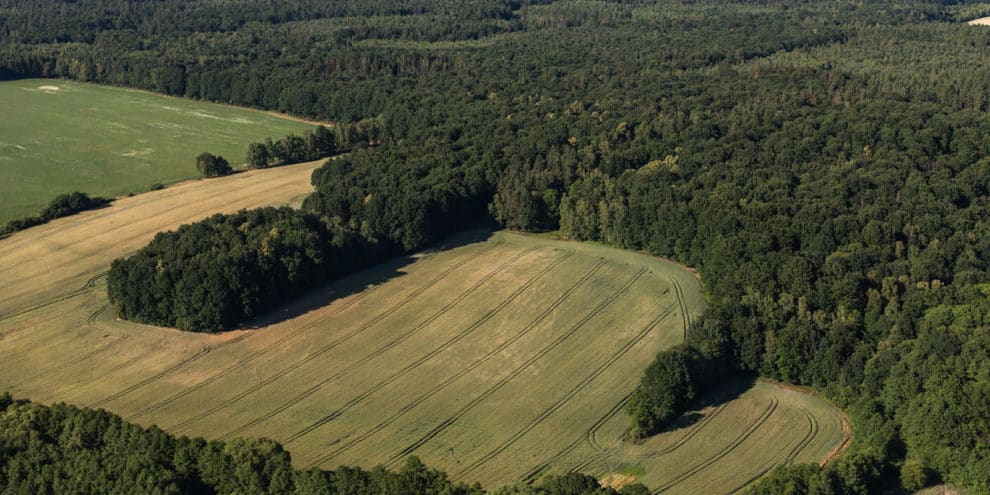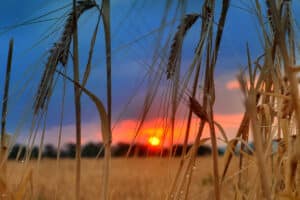According to the LANDTHINK Pulse results, 71.6% of our audience indicated that they would prefer to own one large tract of land rather than multiple small tracts in various locations. There are many factors that go into the decision to buy land, but one of the first concerns to buyers that have decided to purchase property is the amount of acreage they should begin searching for. There is no “right” answer to how much land one should purchase. Ultimately, it depends on a buyer’s budget, their specific situation and needs, and the plan for how the land will be used.
April Pulse Sponsored by
Last month, the April Pulse asked: Would you prefer to own multiple small tracts of land in various locations or one large tract?
Some intended uses for land require larger tracts. Prospective buyers who want to buy recreational land with some kind of a cash-flow component such as timberland, need to consider large quality tracts of land they can hold on to while their investment grows. “Quality” meaning land in a desirable location with growth potential, is accessible, can be used as a single family homesite, or utilized for outdoor recreational pursuits. In order to generate income from periodic timber harvests, most land agents recommend that at least 35-40 acres of the total acreage be “timbered” acres- generating enough volume to be able to sell the harvest to a timber buyer at prices that ensure the enterprise profitable.
A large tract of timberland is an attractive investment for buyers because it offers returns that are superior to most traditional asset classes with minimal risk. Timberland value is determined by a complex mix of tangible and intangible features, and it is recommended that buyers engage the services of a land agent and consulting forester who have the proper training and experience to help them assess the value of a timberland tract. Professionals can help a buyer determine the types and volume of timber on a tract of land, the age classes of the timber stand, and estimate when it will be ready for a harvest. Tract characteristics such as topography and access drive value to pricing. Timberland properties with a high volume per acre that are located within close proximity to a wood processing facility come at a premium price.
Buyers whose goal it is to farm the land and generate income would also benefit from purchasing a large tract of land. Small acreage farms present big opportunity, but they are not feasible for farming at a commercial level. Large scale commercial farming operations require hundreds of acres of farmland. If the plan is to raise livestock, buyers will need to purchase enough land that can support the herd or flock they may eventually have- with plenty of space for grazing.
In an article published on LANDTHINK, How Do You Decide How Much Land to Buy?, PotlatchDeltic offered this piece of advice for perspective buyers. “For many buyers, a smaller tract of land that’s at least 40 acres (an acre is roughly the size of a football field) is good for recreation. But for those who want more privacy, a variety of hunting opportunities, and timber, a larger tract may be a better fit. Resist the temptation to look at the sales price in a vacuum – after all, you get what you pay for. Paying more for a property with quality timber, proximity to recreation, and good roads may well be worth the extra cost.”
The LANDTHINK audience strongly expressed their opinion on ownership of a large property or multiple smaller properties. The majority of our audience, 71.6% of respondents, indicated they would prefer to own one large tract of land. Only 28.4% said they would prefer to own multiple small tracts of land in various locations.

As 28.4% of Pulse respondents agreed, buying one large piece of land isn’t always the best course of action. Large tracts of quality land command a premium price, and many buyers opt for scaling down to smaller tracts of land. A lot of buyers, like those searching for land for retirement and second homes, prefer to own multiple small tracts of land in various geographical locations- like at the beach or in the mountains. Younger generations have become proactive about their retirement, recognizing the benefits of buying land well ahead of retirement and customizing it into the place they eventually want it to be.
Avid hunters can also find that buying smaller tracts of land is often more economical and advantageous than leasing hundreds of acres that they usually have to share with a group. In a video for LANDTHINK, Pat Porter, broker at RecLand Realty, shared why hunters should consider buying a small hunting tract as opposed to leasing. He explains that those searching for recreational land for sale should not overlook the potential for small hunting properties. With a little effort and good land management, smaller tracts can possess the right ingredients to lure the bucks.
It’s a common misconception that bigger is better for giving up bucks- hunters used to believe they needed 1,000 acres to ever find a deer or turkey. As Riley Johnson, a land agent with Mossy Oak Properties, points out in his article Landowners Can Purchase Smaller Tracts for Hunting, “Because hunters have become more educated about game management and what can be done on small properties to improve the land to attract wildlife, hold wildlife and provide a rewarding hunting experience, we’ve seen an increase in hunters searching for smaller tracts of land that they can improve for wildlife. Today, we’re seeing that hunters no longer need to have large tracts of land to be able to attract, hold and harvest some really nice animals and birds.”
The number of small-scale farmers- both urban and rural- is growing. According to the results of the 2017 Census of Agriculture, the numbers of farms under 10 acres increased by 22%, while the number of farms over 2,000 acres increased by 3.5%. Small acreage farms comprise a large percentage of the U.S. farming landscape, but the model for a successful one that produces modest income includes concentration on a high-value niche crop or production process, careful management practices, and an aggressive marketing strategy.
Thank you to everyone who participated and shared the Pulse with friends and connections in the land industry. LANDTHINK would like to thank LOTFLIP for sponsoring the April Pulse. LOTFLIP is part of the LANDFLIP NETWORK and is devoted to lots for sale under 20 acres, such as beach lots, commercial and development lots, estate lots, golf, lake lots, mountain, residential and rural lots. LOTFLIP offers a streamlined approach to connect buyers and sellers of small acreage lots and features lot auctions, lots for lease, and foreclosed lots.
Become a Pulse sponsor! It’s a great way to ensure your brokerage is the first one buyers and sellers call when they have a need to buy or sell property. You’ll get insane exposure on Social + Email + Web. That’s 500,000+ monthly eyes on you! Once you have it, you won’t want to give it up! Pulse sponsorships are offered on a first come first serve basis and are subject to certain limitations. If your business would be interested in sponsoring a Pulse question, please contact us soon.
Do you have a Pulse question you’d like to suggest? Submit your question and we might choose yours!
We want to know what you think about our May Pulse question, chosen and sponsored by The Land Show with Dave and Johnny: Which factor is most likely to influence your interest in buying rural land? Answer now.
This content may not be used or reproduced in any manner whatsoever, in part or in whole, without written permission of LANDTHINK. Use of this content without permission is a violation of federal copyright law. The articles, posts, comments, opinions and information provided by LANDTHINK are for informational and research purposes only and DOES NOT substitute or coincide with the advice of an attorney, accountant, real estate broker or any other licensed real estate professional. LANDTHINK strongly advises visitors and readers to seek their own professional guidance and advice related to buying, investing in or selling real estate.











Add Comment